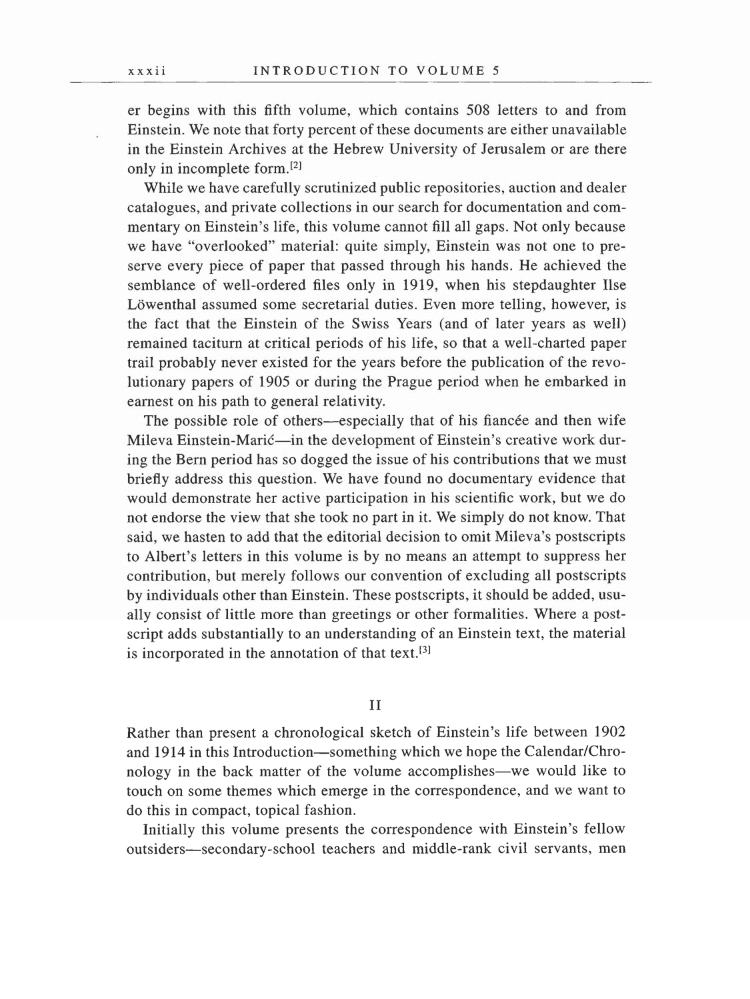xxxii INTRODUCTION TO VOLUME 5 er begins with this fifth volume, which contains 508 letters to and from Einstein. We note that forty percent of these documents are either unavailable in the Einstein Archives at the Hebrew University of Jerusalem or are there only in incomplete form.[2] While we have carefully scrutinized public repositories, auction and dealer catalogues, and private collections in our search for documentation and com- mentary on Einstein's life, this volume cannot fill all gaps. Not only because we have "overlooked" material: quite simply, Einstein was not one to pre- serve every piece of paper that passed through his hands. He achieved the semblance of well-ordered files only in 1919, when his stepdaughter Ilse Löwenthal assumed some secretarial duties. Even more telling, however, is the fact that the Einstein of the Swiss Years (and of later years as well) remained taciturn at critical periods of his life, so that a well-charted paper trail probably never existed for the years before the publication of the revo- lutionary papers of 1905 or during the Prague period when he embarked in earnest on his path to general relativity. The possible role of others-especially that of his fiancee and then wife Mileva Einstein-Maric-in the development of Einstein's creative work dur- ing the Bern period has so dogged the issue of his contributions that we must briefly address this question. We have found no documentary evidence that would demonstrate her active participation in his scientific work, but we do not endorse the view that she took no part in it. We simply do not know. That said, we hasten to add that the editorial decision to omit Mileva's postscripts to Albert's letters in this volume is by no means an attempt to suppress her contribution, but merely follows our convention of excluding all postscripts by individuals other than Einstein. These postscripts, it should be added, usu- ally consist of little more than greetings or other formalities. Where a post- script adds substantially to an understanding of an Einstein text, the material is incorporated in the annotation of that text.[3] II Rather than present a chronological sketch of Einstein's life between 1902 and 1914 in this Introduction-something which we hope the Calendar/Chro- nology in the back matter of the volume accomplishes-we would like to touch on some themes which emerge in the correspondence, and we want to do this in compact, topical fashion. Initially this volume presents the correspondence with Einstein's fellow outsiders-secondary-school teachers and middle-rank civil servants, men
